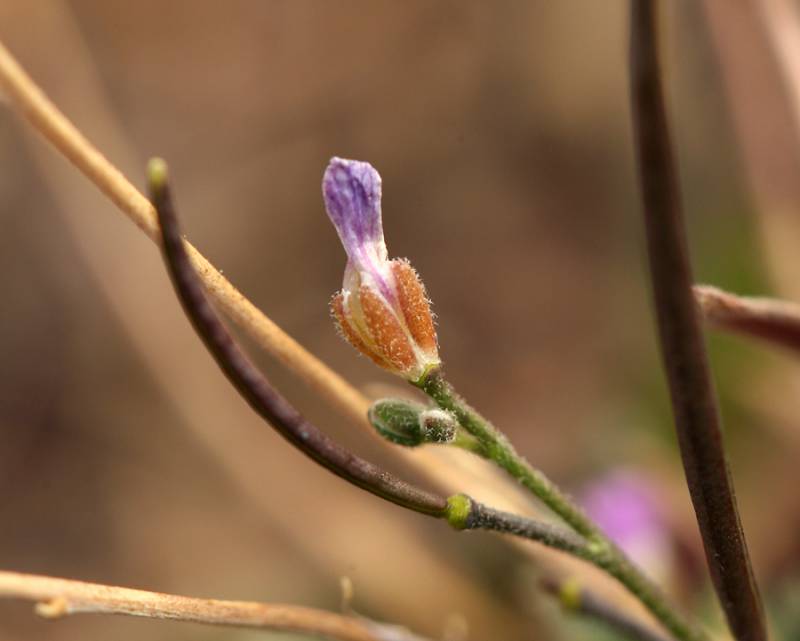Boechera paupercula
Boechera paupercula
Basal leaves narrowly oblanceolate, usually 1-3 mm broad, margins entire, ciliate near base with 0.4 mm trichomes, densely pubescent above and beneath with 2-6-rayed trichomes on short-stalks and up to 0.2 mm;
cauline leaves 2-6, not commonly hiding the stem, lobe-like appendages at base usually absent or up to 1.5 mm, surfaces becoming glabrous towards ends of stems.
Inflorescence usually 3-8-flowered, unbranched racemes; fruiting pedicels erect, not curved, 3-9 mm, glabrous or barely pubescent, not secund;
flowers erect;
sepals 4, glabrous or sparsely pubescent;
petals 4, purplish to light purple, 4-6 mm long and 1-2 mm broad, glabrous;
pollen ellipsoid.
Siliques 2.5-5.5 cm long and 1.3-1.7 mm broad, erect, appressed to rachis, not curved, with parallel edges;
valves glabrous;
seeds in 1 series or uncommonly in nearly 2 series, 1.5-2 mm long and 1-1.4 mm broad, with a continuous wing 0.3-1 mm broad.
Boechera paupercula
- Local floras:
BC,
CA,
OR,
WA
- Local Web sites:
CalFlora,
CalPhotos,
Flora NW,
PNW Herbaria
WildflowerSearch
iNaturalist (observations)
- LBJ Wildflower Center
- SEINet
- Plants of the World Online
- Encyclopedia of Life
- Wikipedia
- Google Image Search


